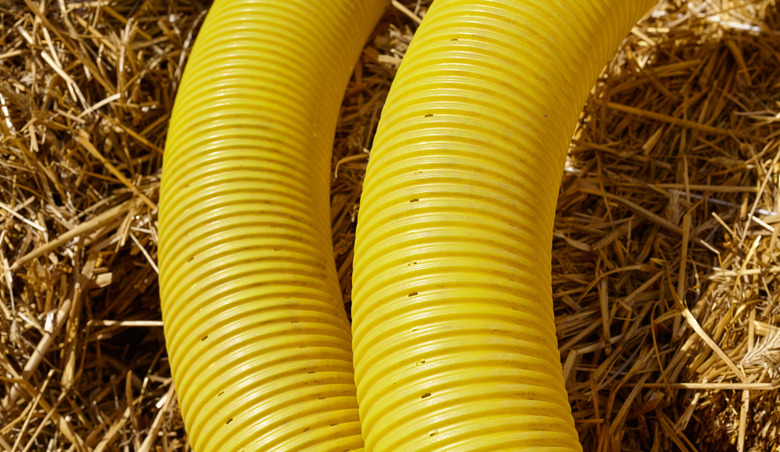How To Install A Perforated Drainage Pipe
When it's installed correctly, a perforated drainage pipe is an effective solution to problems with standing water or excessive groundwater near a building's foundation. Drainage pipes are commonly used to move rainwater from gutters away from a house or to drain wet areas in low spots of the yard. A perforated pipe may also be used near the base of the home's foundation footers as a drain tile; in this case, the drainage pipe is often connected to a sump pump inside your home. Proper slope of the perforated drainage pipe is important for optimal drainage.
Things Needed
-
Shovel
-
Tape measure
-
Garden rake
How to Install a Perforated Drainage Pipe
1. Dig the Trench
Dig a trench roughly twice the width of the drainage pipe and at least 2-feet deep with a shovel. Cut out roots as needed so the pipe can be placed straight in the trench.
2. Add Stakes
Use a small sledgehammer to install stakes every four feet along the drainage system trench. Tie a string to the stake at the location where the water will enter the perforated drainage pipe.
3. Tie Strings to the Stakes
Tie the string to the next stake in the trench. Use a line level to level the string between the stakes. Move the string down on the second stake ½ inch or more to create a minimum slope of 1/4 inch per foot of linear run. Repeat for each consecutive stake in the trench.
4. Check the String Height
Use a tape measure to measure the distance from the string to the bottom of the trench, starting from the beginning of the trench, and add or remove soil as needed to maintain a consistent distance from the string the entire length of the trench.
5. Compact the Soil
Use a tamper to compact the soil between the stakes. Check the distance from the bottom of the trench to the string after replacing soil and compacting with the tamper and adjust as needed to maintain the correct distance.
6. Remove the Stakes
Remove the string and pull out the stakes to clear the way for the perforated pipe.
7. Install Landscape Fabric
Place landscaping fabric in the trench to prevent soil from entering the gravel around the perforated pipe. Extend the fabric up both sides of the trench and out onto the ground surface; you'll use the excess to cover the trench's gravel infill.
8. Pour in Gravel
Add 2 inches of gravel to the base of the trench and smooth it with a garden rake, maintaining the slope of the bottom of the trench.
9. Install the Pipe
Place the perforated pipe in the trench with the holes facing down. This prevents the holes from getting clogged with gravel.
10. Add More Gravel
Fill the trench with gravel to within 4 to 6 inches of the soil line. Wrap the edges of the landscape fabric over the top of the gravel.
11. Cover the Drain Area
Replace the soil and sod on top of the landscape fabric.
Warning
Call 811 (the national "Call Before You Dig" hotline) to have all underground utilities marked on your property before you start digging. The service is free but can take several days, so call well in advance of your start date.
Contact the local building authority to learn about requirements for drainage outlets. Some municipalities restrict or prohibit drainage into storm sewers, gutters, and other public systems.
